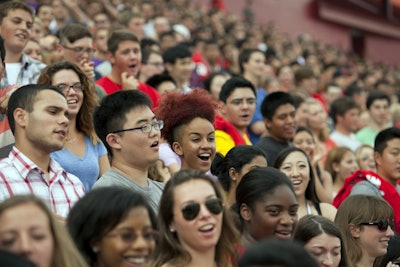Diversity is often spoken of as a goal of leadership in some of the country’s most prominent higher education institutions. However, paying lip service to the concept does not always translate into action. The problem is that, by failing to take action, a lack of diversity means college students are missing unique opportunities that may only present in environments that promote racial, ethnic, gender, sexual orientation, and even socioeconomic diversity within their constructs.

In some research, diversity within social groups can lead to decreased communication, discomfort, greater perceived interpersonal conflict, and other issues that lead to more challenging interactions. However, diversity is also recognized to bring something very important to the table: creativity.
More Experience, More Innovation
A diverse group, such as a student body, class or work group, has a larger range of personal experience. This widens the cumulative perspective of the participants, giving them a larger frame of reference when solving problems. In addition, there is an increased likelihood that the strengths of one member will balance the weaknesses of another.
As a whole, a diverse population often has access to more information than a similarly sized but homogenous group. That allows a more diverse group to reach greater levels of innovation and problem-solving.
For example, if the goal was to design a new skyscraper, choosing a team of students who all major in architecture could lead to shortcomings. Even though knowledge of architecture will play a key role, involvement from other majors, like engineering, would lead to a better result.
Often, it can be challenging for individuals to account properly for the needs or preferences of those not like them. It is not intentional so much as a lack of differing perspective. When asked to solve a problem, an individual only has his or her own experience and knowledge with which to work. Since that leaves them operating in an inherently limited fashion, their response will reflect only their personal narrative.
Diversity implies differences
In some cases, the simple implication of diversity being a factor can produce results that are more favorable. It is not uncommon for individuals to assume that an apparently more diverse group will have key differences in experience and perspective.
Often, these unconscious assumptions (or biases) are automatically considered negative, as they are the results of judgments made on limited information. However, when a group that perceives itself as diverse works together, the assumption of differences can actually lead to great innovation when the group is motivated to work together. Since the participants assume it will be more challenging to reach a consensus, most unconsciously prepare to work harder than if they were faced with the same task with a more homogenous team. In addition, ultimately, increased effort often yields better results.
Diversity supports diversity
People automatically feel more comfortable when there is someone like them already in an organization, including educational institutions like colleges and universities. In fact, minority populations often cite diversity as an important factor when evaluating employers, and likely have a similar sentiment when selecting colleges or universities.
When schools are working to attract the most talented students from across the country, having a more diverse student body and faculty can be a benefit that attracts the best and brightest regardless of their background. In addition, once diversity is established as part of the paradigm, it is often self-perpetuating.
Matthew Lynch is a higher education consultant and owner of Lynch Consulting Group, LLC. He currently resides in Richmond, Virginia.
















